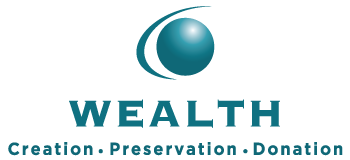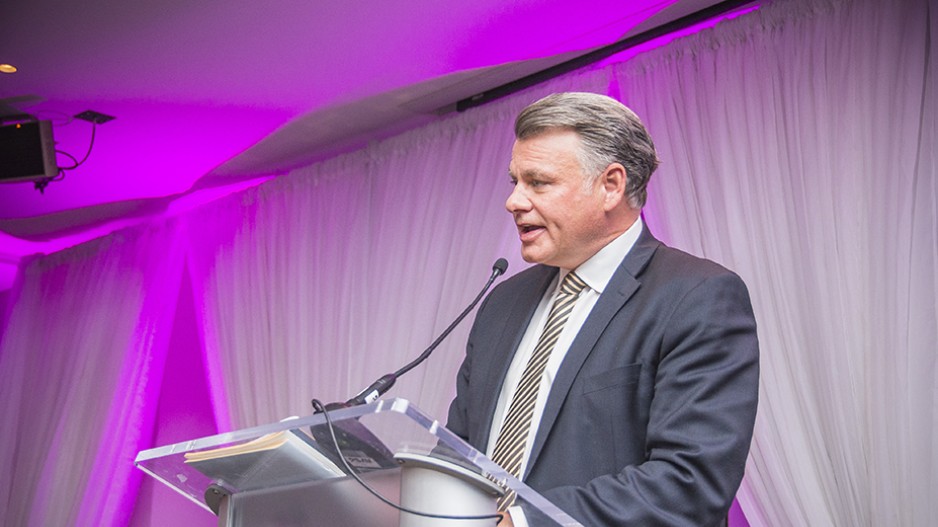To say we live in unprecedented times is a huge understatement.
In so many ways, our day-to-day lives have fundamentally changed, from the way we do business, to how we socialize with others, and of course, to how we raise money for the charities that are important to us.
On a typical year, I would attend dozens of fundraising events, whether it be galas, golf tournaments, breakfasts or endless cocktail parties. As a philanthropist, I would happily take out my foundation chequebook at the end—it’s how we’ve been raising money for hundreds of years.
And my company, The Foundation WCPD, would always be a loyal sponsor at many of these events.
But once the pandemic hit, the world changed.
Thrust indoors, the nonprofit sector could no longer rely on its “bread and butter”, which in many cases makes up more than half of their annual revenue.
The impact for charities has been massive. How can these nonprofits still hold fundraising events and engage supporters? But for me, I was more interested in another fundamental question—how will major donors react to this pandemic? Without the cocktails, dinners and performances, will the wealthiest among us still take out their foundation chequebooks?
Like I said, these are unprecedented times. Nobody really knew the answer.
At The Foundation WCPD, we work with Canada’s largest philanthropists. This tried-and-true method of giving is simple, by combining two tax policies that are older than the RRSP: one to assist Canada’s resource sector to create jobs and produce raw materials we need in society, and another to give Canadians a tax break for donations to charity, or your conventional tax receipt. Together, combining these two tax policies allow our clients, on average, to give up to three times more to charity, at no additional cost due to tax efficiency.
The structure is so popular, that traditionally, for nine years running, we’ve run a large donor waiting list of individuals waiting for product.
January and February seemed normal enough. With the Dec 31st tax year now over, some of our clients want to get ahead of the game and make their commitments early. But for the majority of donors, these are typically slower months.
Until suddenly, in early March, we landed a massive opportunity—a $20 million offering from Skeena Resources, a Canadian mining company in British Columbia.
In the best of times, placing $20 million in charity flow-through in a little over a month would be difficult. And yet here we are, the worst pandemic in a century, and we have to convince our clients to give their money to charity.
We all remember those early days of COVID-19 and the intense uncertainty that followed. The streets became eerily quiet. Supermarkets shelves were left bare. Meanwhile, global stock markets were crashing.
People are people: whether you have millions in the bank, or just a few dollars, those first months had a major impact on all of us.
Put simply, it was scary.
Our major donors were equally shaken. I remember making those initial calls to donors, who stated:
“Do you know what is going on in the world?”
“Do you not read the news? There is no way I know whether I am even giving to charity at all this year.”
These were the responses my team and I received. Meanwhile, we were also hearing it from charities. What is going to happen? Can we count on WCPD to bring in major donors and create these large donations? Don’t forget—using this structure, our firm has generated donations north of $150 million for clients’ charities across Canada. WCPD, and the use of flow-through shares, have become a significant engine driving major donations across the country.
So the pressure was on.
I remember working harder than I ever have in 30 years in business. More phone calls, more emails. The whole team at WCPD put in a massive effort. We contacted more and more accounting, law firms and referral sources to help find donors.
Don’t forget—for the last 9 years, WCPD has had a waiting list of donors. In addition to the panic of the pandemic, there was another element at play.
You see, the flow-through share structure depends on a three-legged stool. There are the donors buying shares, the mining companies issuing stock and the liquidity providers that purchase this stock from the donors. These liquidity providers understand the mining industry and assume the stock market risk for the donor. And traditionally, there has always been a shortage of liquidity providers. But the tide has been turning. The mining business had been in the worst bear market of all time, from 2011 to 2019. It took a pandemic to wake up the industry. People did not just depend on technology stocks, but real assets.
And with the government printing money for relief packages to keep the country’s economy afloat, there has been a push to gold.
For 5,000 years, gold has been money. And not much has changed. Suddenly, investors are searching for a gold position. Whereas in the past they may have a 1% gold position, now they are seeking 5% or even 10% of their portfolio. This has been a rocket fuel for liquidity providers.
That three-legged stool is now even. Suddenly, there is no donor waiting list, and our job just got that much harder in 2020. We need donors.
The dam didn’t break right away, although two things shifted once March gave way to April. First, we approached our major donors with a very clear message—your charities need you. Indeed, with no events, and the needs of society only rising amid COVID-19, philanthropists had to be philanthropists.
Where they chose to give also changed. Whereas in the past they might have more personal causes, donations tended to shift to more fundamental needs, such as food banks.
The second thing that changed was the stock market. By April, society wasn’t quite as panicked. Stocks rebounded, and donors started to feel better. The world wasn’t coming to an end.
And when the dam did break, it was overwhelming. We blew past that $20 million offering, so much so that Skeena tacked on another $13 million. At the end of the day, we ended up closing a $33.3 million raise in the teeth of a pandemic, the largest raise in our company’s history. That meant not only millions for charities that needed it, but also the creation of well paid jobs for Canadians in the exploration sector.
And the giving hasn’t slowed down since. With plenty of liquidity providers and mining companies issuing stock, it has been a constant race to bring more donors to the table.
The experience taught me a couple things about philanthropy.
I have always felt that getting likeminded people into a room together is important to charitable giving. When this pandemic is far behind us, we will return to the galas and golf tournaments. And we should. Giving is about relationships, and a cause that touches your heart. The best way to achieve that is by bringing people together to tell a story.
That said, it is not necessarily the most efficient way to raise large sums of money.
The best way to give, by far, is not cash donations or a chequebook, but flow-through shares with an immediate liquidity provider. It is using this lever in our long established tax policy to encourage the wealthiest among us to give more than they ever have.
With the loss of charitable events, leveraging major gifts has never been more important. And COVID-19 taught us that, now more than ever, we must innovate and find new ways to fund the programming and causes that are important to our communities.
The second thing this pandemic has taught me, or perhaps what it has reaffirmed, is the strength of the human spirit.
When I picked up the phone for the first time in March, even our longtime clients said no. And in early April, they changed and said yes. People needed time to regroup and make sense of the world again.
At the end of the day, we are all in this together. Our team here at The Foundation WCPD pulled together, along with accounting and law firms, the foundations and professional fundraisers, and of course, the philanthropists. When you ask other humans for help, they often do. It was a complete effort.
In this Brave New World, we all must pull a bit more weight. Here at The Foundation WCPD, this is our biggest year of giving yet, because charities do need more. Whereas in the past we might be purchasing more tables at galas, and sponsorships, now we are making more donations to food banks. We have also made donations in medical innovation. In this year’s Giving Guide, you will read about Dr. Art McDonald, one of Canada’s Nobel Prize winning physicists, who has developed more efficient, low-cost ventilator for COVID-19 patients. Quick thinking donors, in collaboration with scientists and the government, made this medical innovation possible.
And we have supported emergency relief funds in our city, including a major donation to the Jewish Federation of Ottawa Emergency Fund.
This pandemic has been a time of dizzying change. We might not have a fancy ballroom, or cocktail in our hand. At the same time, it has also reaffirmed something very important: philanthropist will always be philanthropists.
When pressed up against the wall, we are all capable of amazing things.
For decades, Peter Nicholson has been a recognized leader in Canadian tax assisted investments, with a specialized focus on philanthropic tax planning and tax reduction. Through his work with countless donors, foundations and institutions and boards, he has helped generate in excess of $150 million for client donations. To learn more about The Foundation (WCPD) and how it can assist your philanthropic goals, write peter.nicholson@wcpd.com
Read original Business In Vancouver article here.

